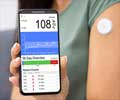Diabetic ketoacidosis (DKA) is a life-threatening condition that frequently requires hospitalization in children with type 1 diabetes
Diabetic ketoacidosis (DKA) is a life-threatening condition that frequently requires hospitalization in children with type 1 diabetes. The critical factors in the treatment of DKA include careful and frequent monitoring of the patient, skillful fluid and electrolyte adjustment, and the initiation of insulin therapy after the initial restoration of fluid volume has been achieved. Continuous low-dosage intravenous infusion of soluble insulin has been the procedure of choice for this because it provides direct control and results in a predictable rate of fall in serum glucose levels. However, admission to an intensive care unit to receive intravenous insulin infusion increases health care costs.
A recent study proposes using a subcutaneous fast-acting analog of human insulin instead of intravenous continuous regular insulin to avoid the need for a second intravenous line, simplify treatment of DKA in children, and provide a more economical solution. The aim of the study was to compare the efficacy of a subcutaneous fast-acting analog (lispro) with continuous intravenous regular insulin (CIRI) in the treatment of pediatric DKA.The fluid replacement protocol aimed at correcting intravascular volume up to the normalization of the peripheral perfusion. Once cardiovascular stability was achieved, the child was alert, and vomiting has stopped, oral rehydration was started. Cerebral edema, the most feared complication of DKA, did not develop in the patients during this study. Also, there were no deaths or "near death" episodes, and no patient had to be treated with mannitol.
The study, published in the August issue of Diabetes Care concludes that DKA treatment with a subcutaneous fast-acting insulin analog represents a cost-effective and technically simplified procedure that precludes intensive care unit admission.











